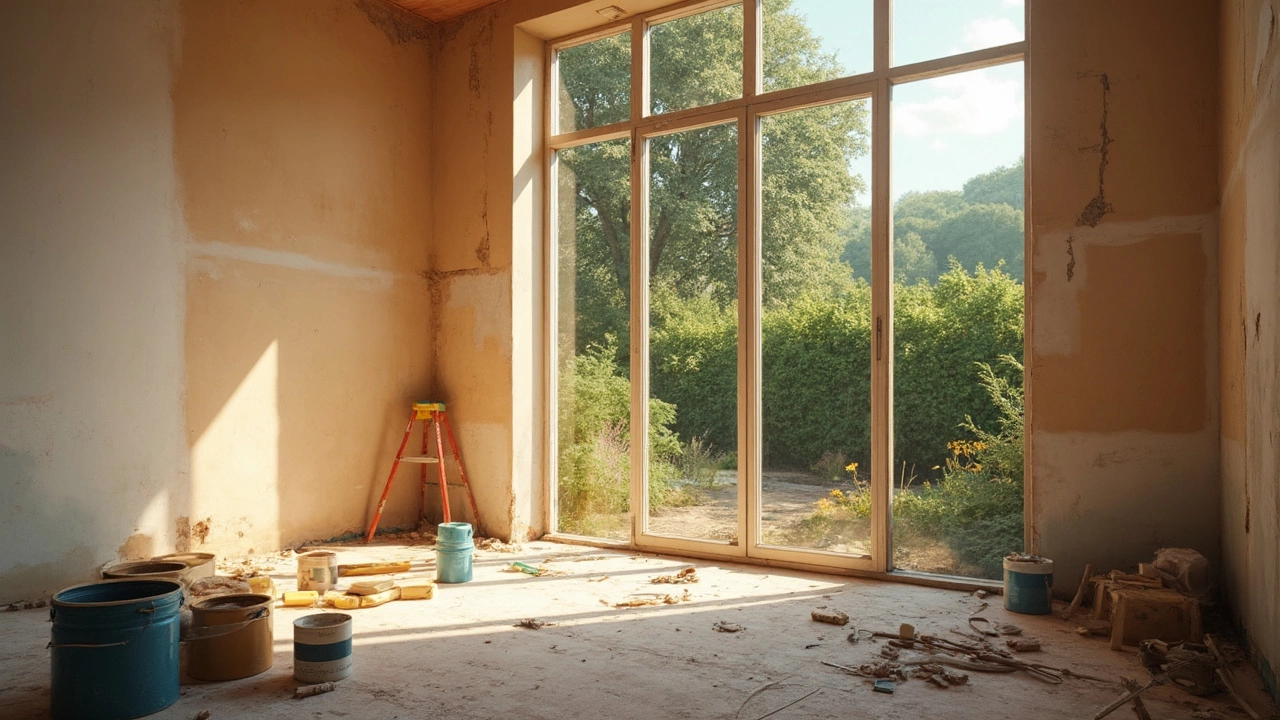Painting New Builds: What You Need to Know
Got a brand‑new house and wondering how to get those walls looking fresh? Painting a new build is easier than you think, but it still needs a plan. Skip the guesswork and follow these simple steps so you end up with smooth, even colour that lasts.
Prep Work Is the Real Secret
Before the first brush hits the wall, you have to clean, repair and prime. New homes often have plaster dust, leftover joint compound, or tiny cracks from the build process. Grab a damp cloth, wipe every surface, and let it dry. Spot any dents or nail holes, fill them with a quick‑dry filler, and sand smooth. A thin coat of primer locks in the surface and stops the paint from soaking in unevenly. Cheap primer can save you money now, but a good quality primer cuts down on the number of top coats you need later.
Choosing the Right Paint and Finish
Most new builds use plasterboard or timber studs. For plasterboard, a water‑based acrylic paint works great – it dries fast and cleans up with water. If you have high‑traffic rooms, pick a satin or low‑gloss finish; it hides marks but is easy to wipe down. For kitchens and bathrooms, a moisture‑resistant semi‑gloss paint stops mould from growing. When you’re shopping, compare the paint’s coverage (how many square metres per litre) and its washability rating. The higher the rating, the better it will stand up to cleaning.
Cost can surprise you. A 10‑litre bucket of mid‑range paint runs about £30‑£45, and you’ll need roughly one litre per 10 m² for a single coat. Add primer (£10‑£15 per 10 L) and you can budget around £2‑£3 per square metre for materials. If you hire a professional crew, expect labour to cost £150‑£250 per day, plus a small markup for their equipment. DIY saves the labour charge but remember you’ll need rollers, trays, brushes and protective clothing.
Timing matters too. Most paint manufacturers recommend waiting at least two weeks after the building’s completion before you start. This lets any moisture in the walls dry out, reducing the risk of peeling later. If you can, paint during a dry spell – humidity makes the paint take longer to cure and can affect the final colour.
When you’re ready to apply, start with the ceiling, then the walls, and finish with trim and doors. Use a 10‑mm roller nap for smooth walls and a 15‑mm nap for textured surfaces. Work in small sections, keep a wet edge, and back‑brush with a soft brush to smooth out roller marks. One coat of primer and two coats of topcoat usually give a flawless finish.
Finally, protect your work. Keep the room well‑ventilated for at least 24 hours, and avoid moving furniture back in until the paint is fully cured (often three to seven days). A quick clear sealant on high‑use areas can add extra durability.
Painting a new build doesn’t have to be a headache. With proper prep, the right paint, and a realistic budget, you’ll finish with walls that look great and stay that way for years. Got any questions? Drop a comment and we’ll help you nail the perfect finish.

Can I Paint a New Build? All You Need to Know
Apr 7, 2025, Posted by Damon Blackwood
Painting a new build can be both exciting and a bit daunting. Before jumping into your creative project, there are specific factors to consider such as timing, surface preparation, and paint types. Understanding when and how to paint is crucial for achieving the best results in your brand-new home. This guide offers practical advice on transforming your new build with a fresh coat of paint.
MORESEARCH HERE
Categories
TAGS
- foundation repair
- commercial construction
- construction
- new builds
- home improvement
- home renovation
- bathroom renovation
- residential construction
- construction materials
- home foundation
- renovation tips
- building types
- contractor
- foundation cracks
- home construction
- architectural services
- building codes
- construction differences
- home inspection
- kitchen installation